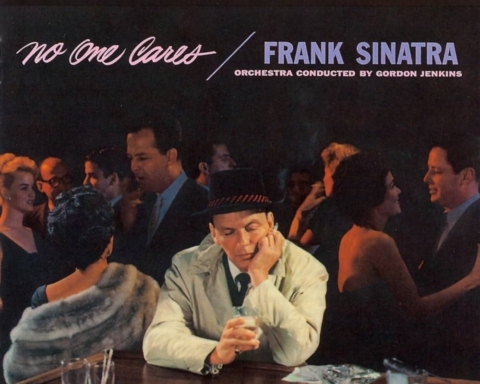In a world more entertainment-focused than ever, the film industry often tailors new releases to a public demand for all things bigger, bolder and, according to some students, not always “morally better.”
Over Valentine’s Day weekend, Tim Miller’s “Deadpool” flooded theaters across the United States with its facetious promotional posters donning the phrase, “Feel the love this Valentine’s Day.”
The irony of the poster is rooted in the graphic nature of the rated-R, antihero flick, starring Ryan Reynolds as a former Special Forces operative.
The film’s trailer, proudly displaying explosions and mass death, helped carry the motion picture to a total of $132.4 million dollars in first-weekend box office ticket sales.
While some might see this movie as too graphic for a Valentine’s Day date, the general public seems to crave these violence-focused motion pictures year-round. According to students though, each individual holds a different level of sensitivity regarding these types of films.
While “Deadpool” is categorized under “Action,” “Adventure” and “Comedy,” its violent complexion isn’t a far stretch from the high-grossing world of horror films, which according to investopedia.com “is another genre with a lot of huge ROI (return on investment) hits and few misses.”
For sophomore environmental science major and Marvel fan Joseph Gould, the sentiments of the flick are far removed from those of horror films, as it fails to portray what he called “real-world violence.
Gould said while he seldom watches horror films, he doesn’t see any conflicts regarding these movies’ productions—as he believes their content is justified by the creator’s’ “artistic vision.”
“…I definitely don’t believe they should hold back anything at all,” Gould said. “Studios need to keep doing what they’re doing because a lot of people really enjoy them… writers and directors should always be allowed to create the film that they envisioned no matter what.”
For Crisann Bailey, a sophomore accounting and finance major, it’s hard to rationalize the messages of modern horror flicks, which she said often contribute to unfair perspectives regarding marginalized populations.
“Families who get killed in their house by someone who is ‘mentally disturbed’ aids in the idea that people who are mentally disabled are killers,” Bailey said. “In my opinion, horror films have a lot of stereotypes in them that should definitely be eliminated…In most movies that involve minorities, they are always the ones who commit murder or just the way in which they dress minorities—for example, dressing an African-American as if they are thugs—is offensive.”
Bailey and freshman marketing major Jenna Cosentino both agreed that they believe horror films, as well as violent movies like “Deadpool,” normalize the thoughts of potential killers, making these motion pictures all the more detrimental.
Cosentino also said that the dichotomy between attitudes regarding cinematic violence and real-world savagery concerned her.
“Innocent people are getting killed everyday, and people claim they want to stop violence,” Cosentino said. “But in reality they are just going to continue to watch violent movies.”
Cosentino added that movies where the defenseless—specifically children—are targeted cross a certain ethical line, especially those recreating one’s traumatic experience.
According to a newsday.com list of the top 25 highest-grossing horror movies worldwide, the lowest-grossing film on the list was “Saw III”—a gore-based saga focused on a crazed man’s kidnapping, torturing and killing of everyday people.
Despite its low ranking, the horror film’s empire still grossed $164,874,275 at the box office, proving there’s a definite demand for violent entertainment, regardless of potentially offensive content.
For Gould, motion pictures such as “Saw” take things too far on a personal note, but he doesn’t see how their content can be restricted.
Nate Discavage, a junior journalism and mass communication major, agreed and said that he feels ethical marketing is the only real boundary for violent movies, ensuring that potential viewers know what they’re in for.
“I think that movies should be able to show what they want, assuming that they market it correctly and notify viewers what they are in store for,” he said. “That way, I can make an educated, personal decision whether I want to watch it or not.”
Despite Discavage’s belief that there shouldn’t be restrictions on violent movies’ content, he added that poorly executed violent scenes are a detriment to the entertainment industry at large.
“Movies like ‘Saw’ and ‘Hostel’ use extreme gore to try and force a reaction from the audience,” he said. “I think it is a really cheap tactic and damages not just horror movies, but the film industry as a whole…We see [increased body counts] in actor movies all the time. Whether it is Freddy Krueger, James Bond or Mad Max, we are seeing an increase in death tolls in movies spanning every genre.”
Discavage said he avoids movies with insensitive approaches to death scenes.
“In regards to rationalization, I think most people toss it up to ‘movie violence,’ but personally there are a few different movies I have avoided—like ‘The Hunger Games’—because of the way they portray death,” Discavage said.
Despite differing opinions, the numbers show that the demand for violent films remains steady.
Regardless of this increasing demand, Cosentino said it might be worth students reconsidering their commitment to the “play” button when browsing through the selection of movies labeled violent.
According to Cosentino, she’d rather relax and enjoy her popcorn, rather than watch others be killed on the big screen.
mcgurllt14@bonaventure.edu







